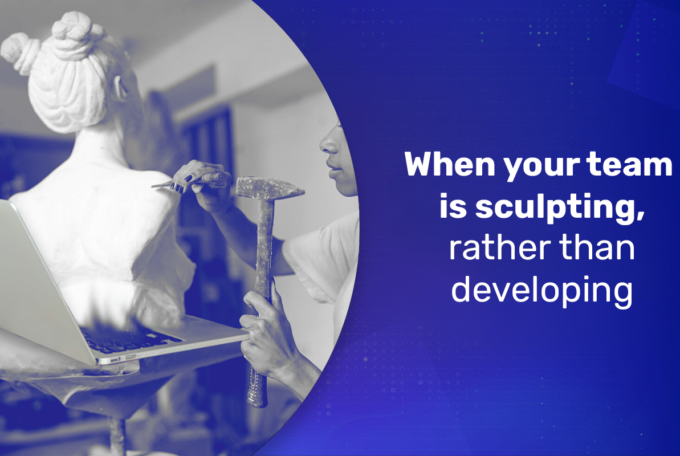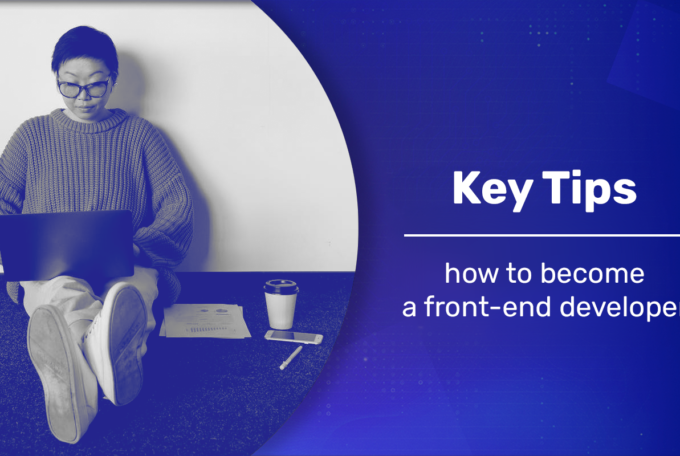Do you want to create software and you already have a specific vision of the program or application in your head? If a digital product is to be profitable for you, a vision alone is not enough. You need to carefully analyze what you and the target user of the software expect. This is the only way to precisely define (and achieve) all the goals of such a product. Find out about all the reasons why Stepwise starts with your business needs.
In the software development process, it often turns out that what the client wants is not what they really need. Identifying your specific business needs right from the start helps to avoid this situation. The purpose of specifying the design needs in Stepwise is to determine what technological solutions in the product will meet the specific expectations of the client and people who are ultimately to use the application or system being created. For us, your success is the most important.
What is the business need in a digital project?
The business need in a digital project results from an existing problem or opportunity at which appropriate actions must be taken to improve the current state. For example, if users of your application frequently report a bug in a particular functionality, there is a need to fix it and increase the satisfaction of your customers. Another example would be when your customers want to be able to place orders more easily. The answer to this need may be a practical website with an online ordering function.
These are just simple examples, but they show that business needs may apply to different areas of your company’s operation. Defining such needs only seems easy. Disregarding this action can make it very difficult to implement the project and scale and monetize the product.
At Stepwise, we always treat the client’s needs as priority. In order to ensure an optimal range of services, we try to thoroughly understand your current situation and expectations. Before we start working on the code, you will surely be asked by our specialist not only about your problems, but also about actions that have already been taken to solve them.
Another question that we try to answer at the very beginning is what difficulties you or the target user of your product face on a daily basis. Knowing these problems, we can look at software development from a different perspective and suggest optimal technological solutions tailored to the specific business needs of your project.
There is one more very important point that allows us to thoroughly understand not only your current situation, but also the intentions and plans related to the planned project. This is the question that you should answer first of all: “What can happen to my idea or product in 3-6 months if I don’t start working on it today?” There are many hypothetical answers: someone will come up with the same idea and launch the product faster, the competition will take advantage of bugs in your software and hurt your PR, the users of your product will start to give up on it. So many scenarios, so many reasons not to delay action.
These are the three basic elements that help us understand your business needs and the market in which you operate. However, the defining of your needs does not end there.
Precise definition of a business need should be supported by a thorough analysis:
-
Who is the digital product for
Defining the target group of users will allow you to examine their needs. You will get a clear answer to whom you are targeting the software and easily identify what potential end users expect.
-
What are the needs of the target group of end users
The software is designed to meet the specific needs of its target users. If you determine who will use the application or program, it is much easier to create a product that meets the expectations of such people.
-
When would you like to implement ready software
The time you have is critical to pinpointing your business needs in a digital project. It not only indicates the final deadline for implementing the product on the market, but also allows you to estimate what functionalities can be delivered by the software house at that time.
-
Are there any restrictions that may hinder the implementation of the project
Not only time can limit you. Budget, amount of available data, knowledge of the software development process and today’s level of technology are factors that must be taken into account in order for the specific business needs to be feasible.
-
What effects do you want to achieve with the software
Instead of focusing only on solutions you know or have seen somewhere, identify what you want to achieve. In the process of software development, very often the same effect can be achieved in many different ways. A reliable software house will advise you on how to best achieve it.
-
What role a digital product will play in your business
Each company has its own unique structure, so think about the role of the developed software in your company. Main product sold to customers? An internal system for your employees? Adjusting the product to the existing structure of the company will allow you to easily integrate the solution with the existing practices of the organization.
-
Why do you want to create a specific product
Define the overall goal of software development. What is the main task of the product for you and the end user. What effect do you want to achieve after the end of the project.
The role of business needs in the software development process
Each project should be preceded by specifying goals and assumptions. Business needs are closely related to them and constitute the basis for stable product development. Thanks to them, we can prepare the business requirements of the software more effectively.
Business requirements are a specification of specific solutions, technologies and functionalities that the final product should have in order to meet all existing business needs. This chain of connections means that at Stepwise your every business need is directly related to the technological solutions in the software that we create for you.
In addition to the list of typical technological solutions, non-functional requirements related to such issues as production time, the application development process and standards used in the project are also important. They usually relate to the properties of the product as a whole, but may also define system limitations. They can cover the following areas:
- Performance – for example Response Time, Throughput, Utilization, Static Volumetric
- Scalability
- Capacity
- Availability
- Reliability
- Recoverability
- Maintainability
- Security
- Regulatory
- Data Integrity
- Usability
- Interoperability
Client’s business requirements at Stepwise:
– are the basis for the work of the entire project team,
– they are the basis for creating a specification of solutions in the product,
– support in checking whether there are already similar solutions on the market,
– help to estimate the time, money and work required in the project,
– allow for faster verification of the product’s development potential.
Specifying the customer’s business needs allows you to relatively quickly assess the development potential of the product. Thanks to them, you can determine what basic technological solutions can help you achieve your goals. With this information, we can more efficiently prepare a PoC (Proof of Concept) or MVP (Minimum Viable Product) for you.
These solutions allow you to check the software yourself, have it tested for target users or present it to potential investors. As a result, with the use of minimal resources of time and money, you get the answer whether the product has development potential and whether it is worth investing more funds in the project.
Find out more about what is an MVP and the process of creating such projects in Stepwise [here].
How do we specify the business goals of the project at Stepwise?
We believe that in order to accurately identify your business needs, we must be equally (if not more) involved in analyzing all the factors described above. We have developed best practices that help us clearly define what you really need to achieve specific results.
Stepwise talks about business needs during the first meetings with the client. Product owner, software architect or UX designer specifies them and translates them into specific technical solutions in the project. On this basis, individual tasks are prepared and handed over to other team members.
Successive workshops with clients clarify the vision of the project in the context of business. We take into account the time and budget available to the client. As a rule, the desired effect of the product can be obtained in many ways. At Stepwise, we always choose the optimal solutions tailored to the intentions and individual capabilities of each client.
Steps of digital project development in the context of the client’s business needs:
- The client analyzes their own business on their own or with the help of Stepwise.
- We examine the current state of the project and the expected effects.
- Together, we define specific needs and business requirements.
- We research the market and check whether a similar solution already exists. If necessary, we verify business needs.
- Based on the specification of needs, we determine what exactly is to be done to achieve the intended goals.
- We are considering creating a PoC or MVP to quickly check if the product can meet the business needs at low cost.
- The Stepwise software architect determines how to technically achieve your business goals and delegates tasks to the team.
- Software engineers, programmers, UX/UI designers, DevOps specialists perform specific actions, creating individual components of an application or system. At each stage of the project, we keep the client’s current business needs in mind, and 2-week iterations allow us to update them in real time.
Summary
The precise specification of the client’s business needs allows for effective optimization of activities in the project. Stepwise receives clear information on what effect the partner expects, and the client retains a clear picture of their goals throughout the entire project.
Each task of our specialists is closely related to specific business needs. Each Stepwise client receives a full insight into the operation of our software house. During the development of the software, client keeps control over the shape of the product and gains the confidence that we use their resources fairly to achieve specific needs.
Knowing your business needs, we help you manage project risk. Each of our employees is primarily an experienced software development expert. In addition to the technical background, we also develop all the competences that can help you effectively create, scale and monetize digital products.
In addition to exceptional interpersonal skills, every IT specialist at Stepwise knows how the business works. The technology we create is only a means to achieve your business goals. Our entire team uses this approach in every action and decision to effectively develop your product.
Precise definition of business needs at the very beginning of cooperation and transparency in Stepwise’s work minimize the risk of project failure. Each of our specialists takes direct responsibility for their actions. We are 100% involved in your project, because we treat your success as our own. Check our services!





